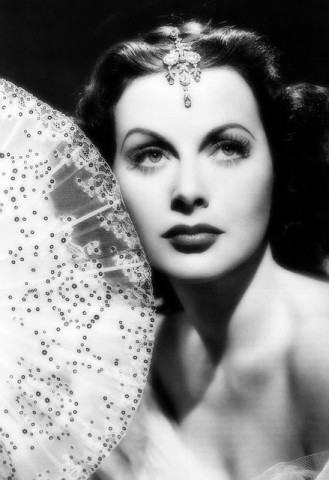
photo: Pixabay
By Eleonora Rosati, at April 2022 issue of Alicante News.
In her seminal 1929 essay A Room of One’s Own, Virginia Woolf submitted that, for women to be able to create, they needed financial independence and a private space.
Despite the hardships and struggles that women have faced throughout history, and which they continue to face today in several societies around the world, their expressions of creativity, inventiveness, and ingenuity have greatly contributed to what the law protects as such, that is: intellectual property (IP).
Women as makers of IP
Through the characters that they created, female authors have captured the spirit of their time: from Jane Austen’s Elizabeth Bennet to Charlotte Brontë’s Jane Eyre, from Louisa May Alcott’s Jo March to Astrid Lindgren’s Pippi, from Sylvia Plath’s Esther Greenwood to Zadie Smith’s Irie Jones, generations of readers have been inspired and, with that, also got to know and understand themselves and the world around them better. Some of them, as the Brontë sisters famously did, wrote their novels under male pseudonyms to cover subjects, ranging from sexual passion to alcoholism and domestic violence, which at the time were regarded as ‘unfeminine’.
Female artists have made major contributions to artistic movements and have shed light on the societies they lived in as well as the tensions and changes taking place within them. Instead of traditional religious subjects, Artemisia Gentileschi painted assertive women like Cleopatra and Judith. The works by artists like Frida Kahlo and Cindy Sherman challenge us to reflect on a deeper level on what one’s own identity is made of. Illustrators like Tove Jansson have created entire universes, like that of the Moomins, which amuse and entertain generations of young and less young fans.
Women have shaped fields like architecture and design, including fashion, graphic, and industrial design. Rome’s MAXXI and Baku’s Heydar Aliyev Centre, both designed by Zaha Hadid, are striking examples of 20th century architecture. Female fashion designers have created new visions for and of women: Coco Chanel liberated them from corsets, Mary Quant freed their legs by inventing the mini-skirt, Miuccia Prada made them feel confident through a minimalistic style. Female designers have created some of today’s most iconic logos, ranging from Carolyn Davidson’s Nike ‘swoosh’ to Paula Scher‘s Tiffany logotype and packaging. Industrial design creations like the Pipistrello table lamp by Gae Aulenti and the chairs that Ray Eames created together with her husband Charles are iconic (and are well known to IP aficionados too, with the EUIPO also acknowledging the special value of it and its special place within the history of design).
Women have made seminal contributions to the advancement of science, with discoveries that have subsequently resulted in several inventions and practical applications. Ada Lovelace is regarded as being the first computer programmer, having realised – as early as the 1800s – that a computer could have applications beyond pure calculation. Physicist and chemist Marie Curie conducted pioneering research on radioactivity and was the first person to receive a Nobel prize twice. Despite the lack of proper recognition during her life, Rosalind Franklin made a fundamental contribution to the discovery of the DNA structure.
Women as shapers of IP law and practice
Women have also played a major role in acknowledging, strengthening, and shaping IP protection. Suffice it to say that it was a female monarch, Queen Anne of Great Britain and Ireland, who passed the first copyright statute of modern history in the early 1700s, the Statute of Anne. More recently, it was a female US Supreme Court justice, Ruth Bader Ginsburg, who played a pivotal role in shaping US copyright law as we know it today. Advocates General at the Court of Justice of the European Union like Verica Trstenjak, Eleanor Sharpston and Juliane Kokott authored a great number of opinions on seminal EU IP matters.
Women have also made notable contributions as advocates for better protection of those who create and work in IP-related fields. They have used their success and following to bring the condition of creators and performers to the fore, and have also done so at a young age: Taylor Swift has called upon streaming platforms to pay higher royalties to musicians; Emily Ratajkowski has contributed to raising awareness on the condition of models and the ability to control the use of their own image; Jennifer Lawrence is among the actors who have denounced wage disparities between male and female performers in the film industry. Considering that 2022 has been chosen as the European Year of Youth, all this is even more notable.
Will the future be (more) female?
The examples provided above are just a small glimpse into the foundational role that women have had in the making and shaping of IP throughout history. This said, and while things are improving generally, a lot of the work is yet to be done: women should have the security (both personal and financial), time, confidence, and support needed to contribute to the arts and science – whether as makers, shapers, or both. Greater diversity enriches and improves societies, both when it comes to developing solutions and products that help a wider population and capturing our vision of the world through art and inventiveness. It is high time that, nearly a century after the publication of her book, Woolf’s advocated room of one’s own finally becomes a reality.
Eleonora Rosati is an Italian-qualified lawyer with experience in copyright, trade marks, fashion and internet laws. Dr Eleonora Rosati is a Full Professor of Intellectual Property (IP) Law, Director of the Institute for Intellectual Property and Market Law (IFIM), and Co-Director of the LLM in European IP Law at Stockholm University. She is also Of Counsel at Bird & Bird and is the author of several articles and books on IP issues.